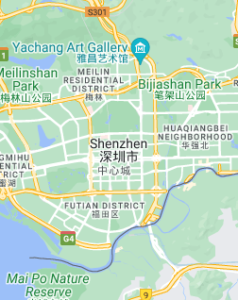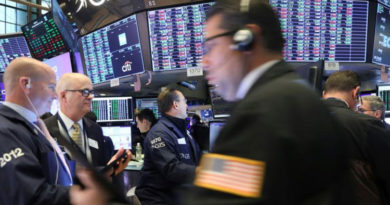OPINION-COLUMN | “Shenzhen Dream”, the Cambodian Version? (Part 2)
“Why Shenzhen model is attractive?”


Shenzhen is attractive not just for developing countries overseas but also for many local administrations in China until today. Many Chinese local governments still send their officials to learn from Shenzhen experiences.
The simplest explanation is that people are attracted by the economic miracle that Shenzhen has shown during the 40 years of reforms and development.
Original condition of Shenzhen was very poor, and infrastructure was nonexistent even the most basic ones such as traffic light.
In 1978, Shenzhen had only 174 factories, with a total industrial output value of less than $10.25 million.
After 40 years of development, Shenzhen had become one of China’s most important high-tech research and development (R&D) and manufacturing bases. As of 2018, over 11,000 high-tech enterprises called the city home.
Shenzhen has seen its GDP grow 20.7 percent on average annually over the past 40 years.
Shenzhen is now China’s third-largest city by GDP after Shanghai and Beijing. In 2022, Shenzhen’s GDP stood at RMB 3.24 trillion ($478.58 billion), while Shanghai and Beijing had 4.47 trillion ($660.18 billion) and RMB 4.16 trillion ($614.47 billion) respectively.
Shenzhen has developed into a service-driven economy and the Guangdong-Hong Kong-Macao Greater Bay Area (GBA)’s technology and R&D hub. Some of the largest names in the technology industry are headquartered in Shenzhen like Huawei, Tencent, ZTE, and DJI.
Manufacturing remains an important backbone to Shenzhen’s economy. Manufacturing accounts for the largest industry by employment, with over four million people employed in the sector at the end of 2020, out of the total population of 12.5 million.
Shenzhen is China’s largest exporting city, ranking first among China’s main cities for 29 years in a row. The Port of Shenzhen is the fourth-largest in the world, with annual throughput reaching 28.77 million TEUs in 2021. Sihanoukville port had an annual throughput of 732,287 TEUs in 2021.
These are inspiring stories that attracted Cambodia’s attention in the latter’s endeavor to develop Preah Sihanouk Province.
“What does Shenzhen look like nowadays?”
The city is spacious. It is a newly built and well-planned city.
Green is almost everywhere. The SEZ legislation in 2005 required that the non-construction land ratio shall not be less than 49%. This is in line with the key strategies in the third SEZ Master Plan (2010-2020) which focused on high-tech and innovative industrial platforms, environmental improvement and urban regeneration.
The streets are wide and decorated with green walkways. Beautiful flowers with varying colors highlight street intersections. There are hardly any cars parking on the streets as mostly they are kept underground.
There are many public spaces, gardens and basketball courts.
The city is also smart. 5G technology is disseminated across the city. People can simply track the duration of their traffic light through navigation apps in their mobile phones. The society is almost cashless as people rely on mobile phone for daily transactions.
A look at various industrial zones tells us more how advanced and developed Shenzhen is across the spectrum.
The Mawan Smart Port boasts the first fully automated terminals in China that became a reality in 2021. The port’s digitalization began in 2017 relying on homegrown technologies such as Container Terminal Operating System. The port is run by China Merchants Group (CMG) with history that can be traced back to 1872, or 151 years as of today. CMG is one of China’s centrally administrated state-owned enterprises, founded and headquartered in Hong Kong. The company is also a listed company in Hong Kong, and has a comprehensive portfolio not exclusive to port management but also finance and real estate.
Shenzhen is home to many high-tech companies. Beside the common technological trademarks of Shenzhen like Huawei, ZTE or DJI (drone company), Shenzhen also has plenty of companies with less than a few decades of history, but they are the companies that have developed advanced technologies to compete in global market against much older giant multi-national corporations.
For example, the thirty years old Hytera company is competing with Motorola on digital mobile radio (DMR), and the company was among the high-tech enterprises banned in the United States together with Huawei, ZTE, Hikvision, and Dahua in 2020.
A much younger UBTech company was created in 2012 and is specialized in humanoid robots. The company even created Artificial Intelligence (AI) curriculum for elementary schools and their office put on display robots made by those elementary pupils.
This company is located in Nanshan intelligence or smart park that the Shenzhen government created to host young hi-tech start-ups. The office space rental costs RMB 60 ($8.71) per square meter whereas the market rate in Nanshan area outside the intelligence park would cost around RMB 200 ($29.05) per square meter, more than three times. Everything in Nanshan intelligence park belongs to the Shenzhen government. The government provides incentives to companies with several young PhD holders who are developing new technologies. Those companies can initiate projects that can be selected for seed funding around RMB 4 to 5 million (approximately $580,000 to $730,000) even if not all of those projects succeed.
Shenzhen government also created Shenzhen Virtual University Park (SZVUP) in 1999 to attract famous universities with high technologies and their professors to set up their virtual campus in Shenzhen, in the model of one campus for multiple universities.
This is how supportive the Shenzhen government is.
Equally important, this also shows the significant amount of disposable resources that the government can provide.
Local entrepreneurs said that in Beijing, companies must listen the government. However, in Shenzhen, the government listens more to private companies. Shenzhen government has done all it can to make sure that Shenzhen becomes the paradise for local and international companies. The government always tries to be supportive and facilitative rather than regulatory. The government provides platform for growth and building of business networks including overseas.
For example, Mindray company, which produces medical equipment from primary care to comprehensive diagnosis system with high-end technology, relies on government’s support in linking the company with overseas market. The company is so young, founded in 1991 or 32 years old, but it is competing with traditional grand players of the world in this specialized field in terms of cost-efficiency and quality.
Beside big companies and technologies, we cannot overlook the importance of high-skilled and highly committed human resources.
In Shenzhen, there are many young and energetic workers in their 20s or 30s. During lunch break in the intelligence park, we can see those high-tech workers come out with their T-shirts, jeans and sportive sneakers, instead of business attires, filling the streets of the industrial parks that take the inspiration from the Silicon Valley.
When some restaurants in Guangzhou are closing at 9:00PM, in Shenzhen high-tech zones, 11:00PM is the normal day rush hour.
This is very much in line with the Chinese slogan used in the early days of opening-up and privatization, which says “time is money; efficiency is life.” The tech savvy and highly competitive workers have the hungry mentality like the “gold rush” era, and they are willing to work extra miles to achieve their economic betterment.
“What does Cambodia want from Shenzhen model?”
Putting the development of Preah Sihanouk Province into the context of 40 years development of Shenzhen SEZ, the former has just remained in its nascent stage but not that it has not had its own igniting effects. The impacts from the Belt and Road Initiative (BRI) and the huge influx of Chinese investment capital and tourists in the late 2010s were the important stimulus that has revitalized a stronger desire for development. The negative impacts from overly and unplanned development had compelled the government to intervene with a clearer planning, and thus the development of the Master Plan following the Shenzhen model.
Comparing with the development of Shenzhen, Cambodia does not have ideological restriction in introducing Shenzhen model because Cambodia has been a market economy since the beginning, and its investment regime has been one of the most liberalized in the region.
At this stage of development, it can be observed that there should be three important reasons for Cambodia to adopt Shenzhen model.
Firstly, it is about inspiration. It is not about ideology but rather on inspiration and pragmatism. Cambodia was attracted to the success of Shenzhen’s development and wants to apply Shenzhen’s elements of success in the development of Preah Sihanouk Province. Cambodia has the benefits of latecomers by learning from the lessons of Shenzhen and can get itself better prepared and coordinated towards sustainable development. In this sense, it is fair to say that the government is intending to adopt a macro-economic intervention, planning and regulation of the development instead of a fully laissez-faire attitude. Nonetheless, it remains to be seen how much the government intends to intervene in the long-term process of development. Whether the government is acting as a regulator, a supervisor, a planner or a partial stakeholder of the development, this would entail further discussion within key government agencies, depending on political will, institutional capacity and committable resources. Division of labour among different layers of government institutions and identification of their core competence and responsibilities are also subject for future discussion.
Secondly, it is about the sources of investment. By linking with Shenzhen model, Cambodia is trying to inform Chinese investors that they can expect a similar environment like Shenzhen should they need to find a new or additional investment destinations. Shenzhen needs Hong Kong investment and it has greatly benefited from the immediate geographical distance and blood lineage of Chinese in Hong Kong. Similarly, Shenzhen may act as Cambodia’s gateway to Chinese investment if Cambodia can firmly commit to business and investment-friendly environment that has supported Shenzhen’s miracle.
Thirdly, it is about the source of innovation. Access to modern technologies and innovation are the important inspiration for Cambodia to link with Shenzhen, which has great track record in absorbing modern technologies as well as in integrating technologies within the city’s development. Again, like the case of Shenzhen, such development takes time. How much is modern, or how much is called advanced technologies, this is a matter for further discussion. In the early stage, Cambodia may need appropriate and relevant technologies, not immediately high-end technologies, to uplift its industrial model from labor-intensive into a higher value-added and skill-based industrial model in a gradual manner.
Sim Vireak is a Strategic Advisor of the Asian Vision Institute (AVI) and a PhD Candidate of Jinan University (Guangzhou)
TRIVIA:.
Shenzhen
Description
Shenzhen, in southeastern China, is a modern metropolis that links Hong Kong to China’s mainland. It’s known for its shopping destinations, including Luohu Commercial City, a massive mall with a vast array of wares, from tailors’ custom clothing to faux designer bags. The city also features contemporary buildings, such as the 600m-tall skyscraper Ping An International Finance Centre, and a number of amusement parks. ― Google


 Memento Maxima Digital Marketing
Memento Maxima Digital Marketing



 Ads by: Memento Maxima Digital Marketing
Ads by: Memento Maxima Digital Marketing






